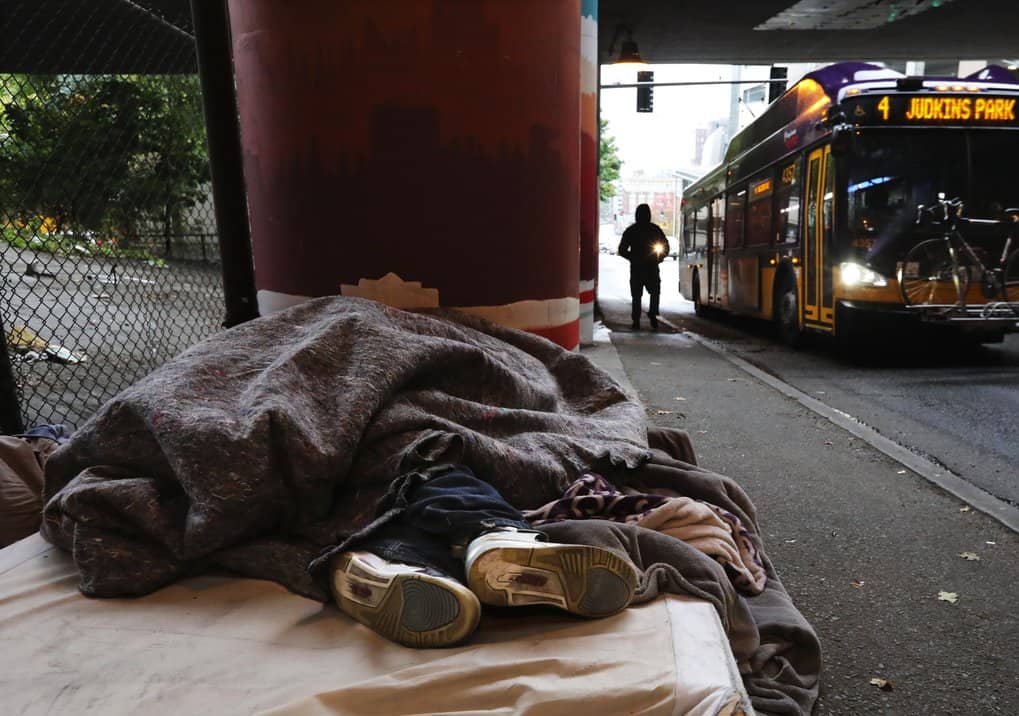
Recently, the US housing crisis has begun to be noticed by journalists if not yet by politicians. The most tragic expression of the crisis is the nation’s growing homeless population, but its effects are being felt all the way up the economic ladder to the top rungs of the middle class.
Houses are more expensive than they used to be. The average home that cost $98,000 in 1960 now costs $225,900 in constant dollars. Wages have not kept up. Homeowners now earn 50% more now than they did in 1960, but home prices have gone up 112%.
Millennials — those born between 1981-97 — have been especially hard hit. Although their desire for home ownership matches the rest of the population, only 37% of them are home owners, vs. 45% of the rest of the population.
The reason for home prices outpacing wage increases is that supply has not kept up with demand. Home construction per household is now at its lowest level in nearly six decades. The rental option hasn’t provided an escape valve. Nearly half of renters struggle to afford their housing — meaning that they spend more than 30% of their income on housing.
We know why home construction hasn’t kept up: government interference in the form of mountains of regulations. The cities with the highest rates of homelessness and the most expensive housing markets are also the most regulated: Los Angeles, San Francisco, San Diego, Seattle, New York, Denver, Boston. “It’s so tough to find an affordable place to live in San Francisco that people in their late thirties are living in dorms,” the City Journal writes.
Houston, by contrast, has very little zoning and other regulations that impede new housing construction. Not surprisingly it doesn’t have a housing crisis. Construction there has kept up with demand, and the price of new homes has been relatively stable.
Three levels of government interference
Most government interference with home building occurs at the state and local level, especially the latter. But in California, state government plays an especially pernicious role beyond the interference of local government. In the words of the New York Times,
Long a leader and trendsetter in its clean-energy goals, California took a giant step on Wednesday, becoming the first state to require all new homes to have solar power.
The new requirement, to take effect in two years, brings solar power into the mainstream in a way it has never been until now. It will add thousands of dollars [$8,000 to $12,000] to the cost of home when a shortage of affordable housing is one of California’s most pressing issues.
Many environmentalists are quite happy that the working population is being priced out of home ownership. They reason that this will force people to move into high-density housing in cities and abandon their cars for mass transit. This in turn, environmentalists believe, will reduce CO2 emissions and save the planet from the climate catastrophe they are constantly predicting (and then rescheduling when the latest due date passes uneventfully).
Many of the regulatory obstacles to new housing construction occur at the local level. This takes the form of zoning regulations, unnecessary construction requirements, forced contributions to public housing funds, permit fees, and community approval.
The federal government hasn’t been helpful either. According to an op-ed in today’s Wall Street Journal by two American Enterprise Institute fellows
The Trump administration has finally turned its attention to housing policy. Unfortunately, the president’s Memorandum on Housing Finance Reform, issued last week, is a major disappointment. It will keep taxpayers on the hook for more than $7 trillion in mortgage debt. And it is likely to induce another housing-market bust, for which President Trump will take the blame.The memo directs the Treasury to produce a government housing-finance system that roughly replicates what existed before 2008: government backing for the obligations of the government-sponsored enterprises Fannie Mae and Freddie Mac, and affordable-housing mandates requiring the GSEs to encourage and engage in risky mortgage lending.
…
Since 1992, this government intervention has been guided by the misconception that low down payments and high debt-to-income ratios will help low- and middle-income families buy homes. The resulting policies produced a highly volatile U.S. housing market, subject to enormous booms and busts. Its culmination was the 2008 financial crisis…
At the end of Mr. Trump’s first term, his administration will have squandered the opportunity to substantially privatize one-sixth of the U.S. economy. Instead, the policies that contributed to the last housing bust will remain in place, enabling Democrats to blame Mr. Trump for the next one. Even though Democrats originated these policies, they’ll have a point.
The solution to the housing crisis — and banishing the threat of mortgage-provoked recessions — is to let markets work with minimal government interference, whether at the local, state, or federal level. This will open the way to supply matching demand in housing and to builders introducing cost and time-saving innovations such as factory and modular home building.
[Multiple hat tips to the Pacific Legal Foundation’s Sword and Scales pamphlet “Make Housing Legal Again,” from which we quoted extensively.]

Leave a Reply